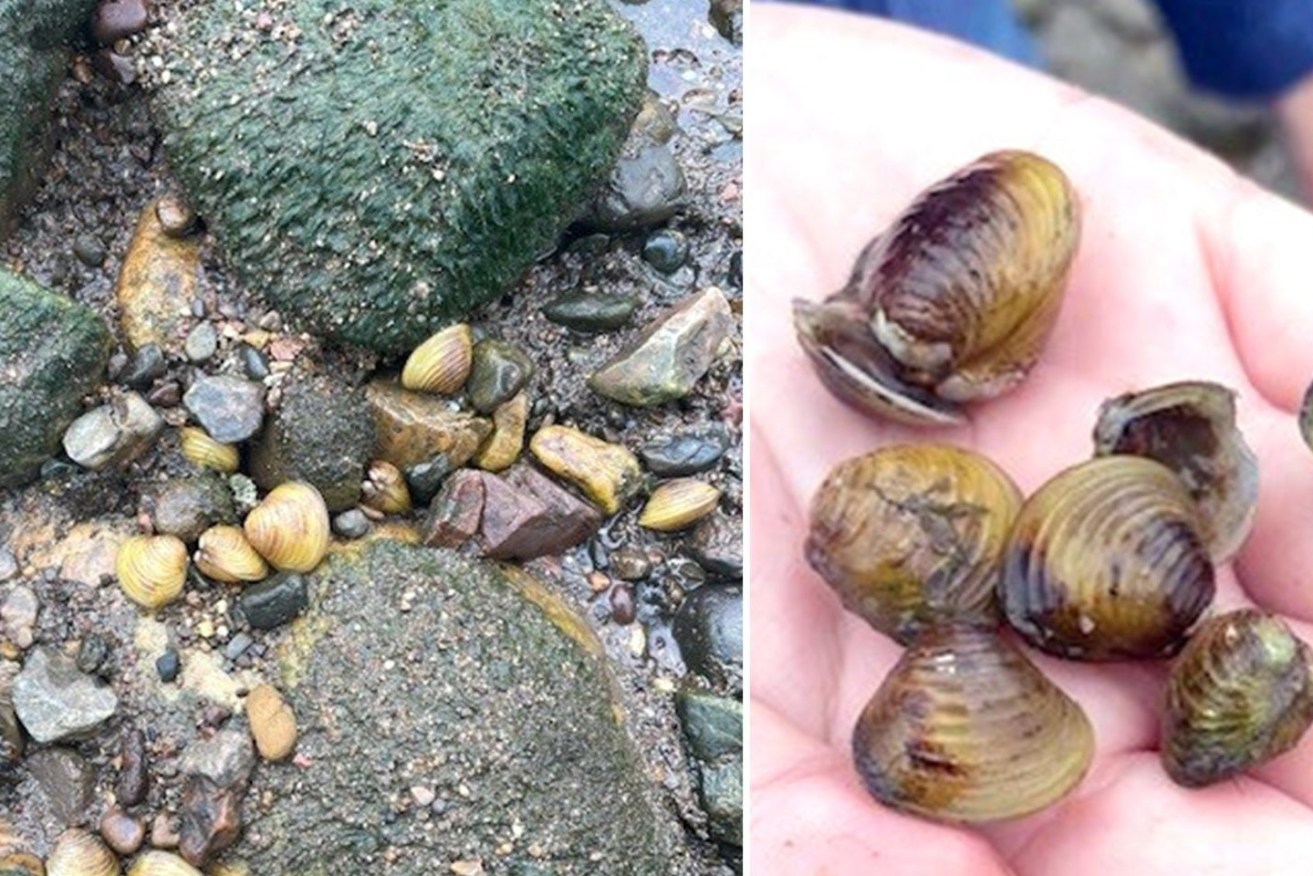It may wreck our rivers but authorities say they have no plans to halt this clam
There will be no attempt to eradicate a new exotic pest that could threaten river health and water infrastructure in Australia.

The highly invasive freshwater gold clam (corbicula fluminea) at Colleges Crossing along the Brisbane River. (AAP Image/Supplied by the Queensland Government)
Authorities announced the country’s first detection of the highly invasive freshwater gold clam in mid-February, saying it had been detected at several locations in the Brisbane River.
The fast-growing, prolific breeder had been on a list of priority exotic pests Australia wanted to keep out due to its capacity for environmental harm.
A single clam can produce 400 offspring a day and up to 70,000 a year, meaning they can quickly form large populations capable of blocking waterways, driving down water quality, and crowding out native species.
The clam can also clog water infrastructure, including hydro-electric dams, irrigation systems and water treatment plants.
And it’s very good at spreading, harnessing river water flows to disperse larvae over broad areas.
It has now emerged the pest was in the Brisbane River for a year before it’s presence was confirmed, and the decision not to attempt eradication was made in January, before the public learned of its arrival.
“It has been reported to DAF (Queensland’s Department of Agriculture and Fisheries) that the clams now identified as this species were first noted in low numbers at Colleges Crossing early in 2023,” the department has said in a statement.
So far it’s not believed to have spread beyond the Ipswich region of the river.
The federal agriculture and fisheries department says the National Biosecurity Management Consultative Committee met in January and agreed eradication from Queensland was not technically feasible.
The decision was based on the view the clam is now “well established” in the Brisbane River and the lack of effective eradication methods.
“Freshwater gold clam has not been successfully eradicated from any locality it has invaded globally,” the department says.
In March, the Queensland department said work had started on a national surveillance and preparedness strategy to manage the clam’s spread and impact.
“No positive identification of the clams in catchments other than the Brisbane River has been made so far,” the department said at the time.
Dr Carol Booth, from the Invasive Species Council, says authorities must release the full assessment behind the decision not to attempt eradication.
She says there could be enormous economic and environmental consequences for Australia if the clam spreads.
“It tends to become extremely abundant, sometimes more than 10,000 a square metre, and outcompete native mussels.
“It can alter nutrient cycles, reduce water quality, and transform food webs. During extreme weather events, large numbers can die and release toxic amounts of ammonia.”
Dr Booth pointed to a research paper published in 2022 that suggested the global cost of the pest was more than $US12 billion over the past 40 years.
She says that’s an underestimate, given costs have mostly only been documented in North America.












